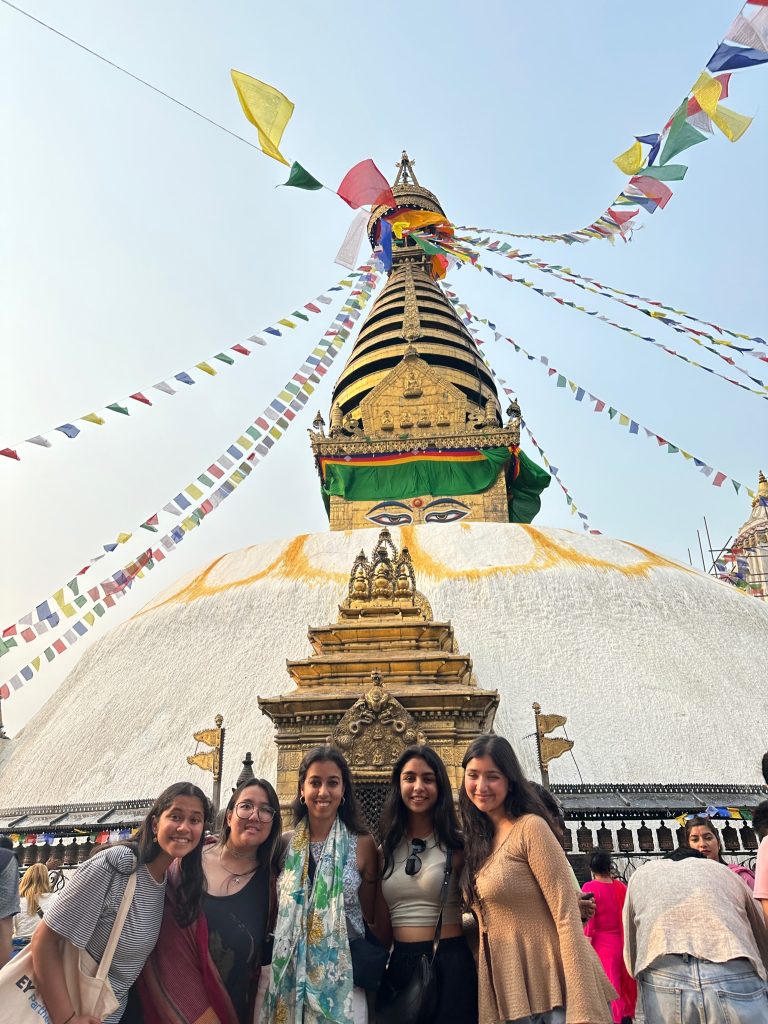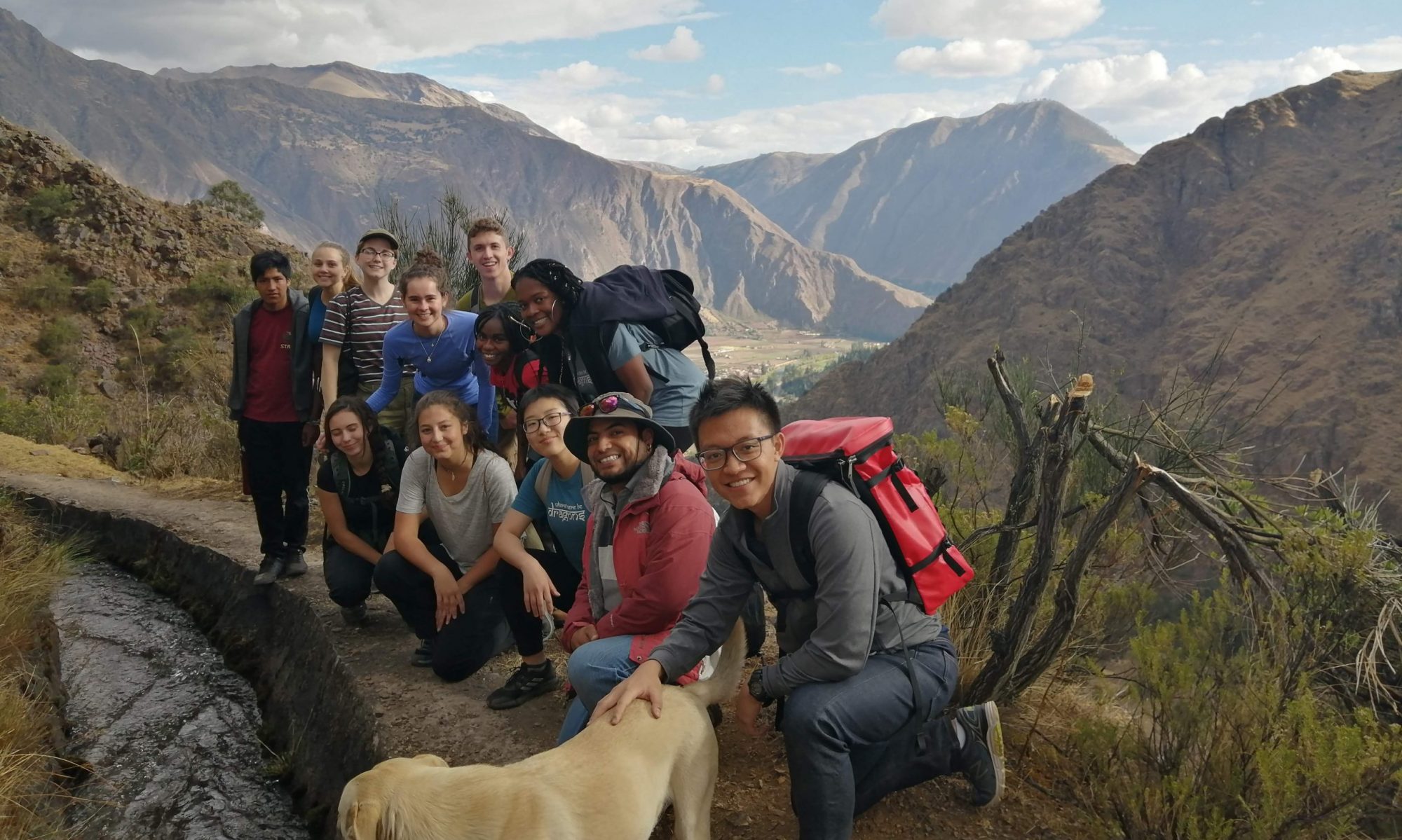By Ishika Gupta

On May 15th, our South Asian Regional Committee (SARC) group left Boston for Nepal. Though excited, the five of us were filled with anxieties about our trip – with a 17 hour layover in Doha, we were in for approximately 35 hours of travel. Though I was nervous, while in Doha our group bonded quickly, and when we landed in Nepal, it was clear that we felt comfortable with each other and our minds were more at ease.
My first impression of Nepal was characterized by the hospitality we saw right outside the airport and during the first days of our trip. Hanshika, one of the members of our group and a Nepali, ran into her school friend, Ayushka, on the flight. She was immediately very friendly to all of us, and waited patiently for the entire group as we spent time applying and paying for visas, and standing in the immigration line. Ayushka offered to take pictures of our group, and as soon as we stepped out of the airport, we saw her family waiting enthusiastically for her arrival. As Hanshika spoke with the cab drivers, Ayushka’s family also welcomed us to Nepal and wished us well.
Though we did have a difficult start to our trip – having to change hotels – the Nepali hospitality continued throughout the first days of our trip. As we ate breakfast the first morning in our new hotel, we chatted with the owner as she welcomed us and gave us recommendations on what to see nearby. Hanshika, though a member of our group, has become our wonderful tour guide – showing us all the best spots, explaining Nepali customs to us, and answering our silly questions. We are also so excited to meet her family over dinner! So, even though I was anxious in the days prior to our travel, due to the supportive dynamic of our group and the hospitality I have experienced in Nepal, I am feeling more stress-free and excited about continuing our journey. Having heard stories about my parents’ travels to Nepal growing up, I have wanted to visit this country for so long, and am incredibly grateful for the opportunity to do so.
On our first two days here in Kathmandu, we explored the city, and even took a day trip to Nagarkot and Bhaktapur. Since it was a weekend, we were unable to conduct any interviews and instead took the time to become acquainted with our surroundings. On our first day, we walked around the Durbar Square in Patan, strolling through the countless shops and admiring the beautiful architecture. We were able to step inside a couple of temples, where we observed the intricate carvings, as well as religious statues decorated with fabrics and designs of numerous colors. Then, we stepped into a small museum, which housed several religious artifacts and exhibited the history of the square, as told by Henry Abrose Olfield, who was a British doctor and artist in the British residence in Kathmandu from 1850-1863. Afterwards, we had a discussion on the duality between this history, that of such a prominent landmark, being told by a British man, while so many stolen Nepali artifacts sit in British museums. After this and a quick lunch, we went to one of the most famous tourist attractions in Nepal – the Swoyambhu Machachaitya. Here, we saw many of the known colorful Nepali flags and temple, seen in many postcards and media across the world. Walking around, we saw the view of the entire city of Kathmandu. Especially at this location, I felt so appreciative of this opportunity! On our second day here, we took a day trip outside of the city, going to Nagarkot and Bhaktapur. In Nagarkot, we were able to see a scenic view of the mountains and enjoy a delicious lunch. Afterwards, we were able to walk around the town of Bhaktapur – where we were able to view the former royal palace and temple. We also walked around through the markets, and all bought postcards of important landmarks we had seen thus far.
Overall, though we haven’t formally begun our research, these first couple days have given us the opportunity to become acquainted with our surroundings in a more meaningful way, something that will most certainly aid us in our further academic pursuits. I look forward to my first interview tomorrow, which will be with Economic Development Professor Binayak Krishna Thapa at the Kathmandu University School of Arts, as I seek to explore my research topic: the exclusion of informal workers from Nepal’s social protection systems.
